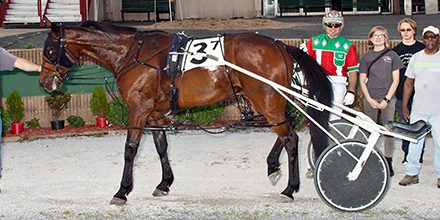first published in the January 2023 Equiery
On December 7, 2022, Virginia Tech’s Helmet Lab released the findings of its research into equestrian helmet safety. The resulting helmet ranking system came after two years of research, including analyzing over 100 videos of riders falling from horses, measuring the hardness of the sand, dirt, grass and synthetic surfaces underfoot at equestrian events, and dragging dummy heads and other equipment. In addition, actual helmets were used at Virginia Tech’s equestrian facilities during rider fall simulations.
The results from the study show that only two of the 40 helmet models studied receive a top “five star” rating. Eleven models earned four stars and the rest were rated at three stars or below. All of the helmet models tested are approved helmets through ASTM and SEI, which requires manufacturers to submit helmets for extensive testing before being sold to the public.
Noteworthy is that the Virginia Tech rating system is based primarily on low impact falls, while the ASTM and SEI requirements focus on high impact testing. “Standards for equestrian helmets are typically based on severe impacts,” Stefan Duma, director of Virginia Tech’s Critical Technology and Applied Science department stated. “What we found is that a lot of riders come off at lower velocities, and many helmets are too stiff to effectively cushion those softer impacts. The helmets that perform better are able to deal with different energy levels.”
According to Virginia Tech, its new ratings go beyond existing standards by using a formula that considers the rotational acceleration that occurs when a rider’s head hits the ground, in addition to linear acceleration. Each helmet model was tested at three impact locations and two impact speeds to represent real-world falls.
Virginia Tech has previously used similar methods to rate helmets used in football, soccer, cycling, hockey, snow sports and whitewater sports. The helmet lab was started in 2011.
In response to the new helmet rankings, several helmet manufacturers issued statements. Mips stated, “helmet-based safety leader Mips welcomes Virginia Tech Helmet Lab’s equestrian helmet ratings but warns tests may fall short.” Mips, which stands for Multi-directional Impact Protection System and is based out of Stockholm, Sweden, added, “after carefully evaluating the test methods and ratings process, Mips believes that the STAR ratings system should adopt additional testing methods.”
Mips co-founder and chief science officer Peter Halldin explained, “The Virginia Tech rating program conducts tests to the helmet that primarily include compression forces to the helmet, mimicking an accident situation where the rider falls straight towards the ground, a vertical velocity relative to the ground. However, even if rotational kinematics are measured, rotation is principally induced due to the head rotating around the neck, not at the first contact with the impacting surface.”
Halldin went on to state, “If a horse and its rider have a speed forward during their fall, there will be both vertical and horizontal velocity relative to the ground, and rotation could also be induced at the initial contact with the ground due to tangential force. To be able to replicate this phenomenon, another test method is required.”
Mips uses a rating system created by the Swedish insurance company Folksam, whose rating system, according to Halldin, “includes impacts that have a tangential force acting on the helmet, which we suggest Virginia Tech implement to complement their current test method.”
Tipperary representative Alex Brown posted the following statement on behalf of Tipperary Equestrian: “Regarding the VT results, we must explore how to incorporate the new learnings while ensuring that we continue to meet the ASTM F1163-15 equestrian standard; a requirement for us as a North American brand. Most importantly, the VT evaluation is weighted towards low velocity impacts, while the current ASTM standard focuses on high velocity impacts known to cause catastrophic injuries like a skull fracture, or worse. Both impact types are entirely possible and now that the importance of low velocity impacts has been brought to light by VT, addressing both vastly different fall scenarios is necessary.”
Brown also pointed out that the ASTM standard is updated every five years to capture new research. “We’re eager to see the update and subsequent changes in the equestrian industry, which is unfortunately often the last to see new innovations,” Brown added.
Michael Diamond of One K posted the following statement: “As you are likely aware, Virginia Tech has published a study of 40 equestrian helmets that have been tested and assigned a rating using their STAR evaluation system. The safety of our consumers is a top priority for One K, and they know that selecting the right helmet means finding one that performs on impact and is properly sized and fitted. We applaud the efforts of Virginia Tech to explore these helmet safety issues.”
Diamond added, “Please note that the VA Tech rating system is not a pass/fail system. One K helmets have passed the safety standards for equestrian helmets set by ASTM F1163-15. Those results are then certified by the Safety Equipment Institute (SEI). It is important to note that the ASTM standard is based upon high impact falls that could result in catastrophic injury. Helmets built to the highest levels of this standard often do not score high on studies that include low impacts.”
Charles Owen posted the following statement: “At Charles Owen, we welcome any advancement or research study which shares new information about concussion to the public. We appreciate the Virginia Tech findings in relation to low-velocity impacts. However, it’s important to highlight the potential issues in basing research methods on social media videos of accidents. Whilst there is a wealth of content available, accident and concussion information should ideally be gathered from riders themselves and medical records to truly understand how concussion was caused.”
Charles Owen has been gathering detailed information about rider accidents since prior to the Virginia Tech study. It currently has over 1,000 case studies, many coming from the company’s online Accident Report form. “This first-hand data is used by the equestrian industry to develop safety standards to improve helmet safety across the industry,” the company stated and added, “The three main international safety standards of VG1, PAS:015 and ASTM incorporate low-velocity impacts as seen in this study, as these do play a role in everyday accidents. However, there are also crucial tests such as spike tests, rotational tests, crush tests and hazard edge tests that also need to be considered when evaluating helmet safety. These tests are peer-reviewed and developed over many years by medical consultants, industry experts and PhD researchers to replicate major causes of rider head trauma and concussion. This might be a rider landing on their head, being kicked, hitting a fence or rock, or being rolled on (to name a few).”
The Maryland Horse Council and Equiery staff highly recommend that consumers do extensive research of their own when selecting which model of helmet to purchase. Safety ratings as well as proper fit should be considered.












